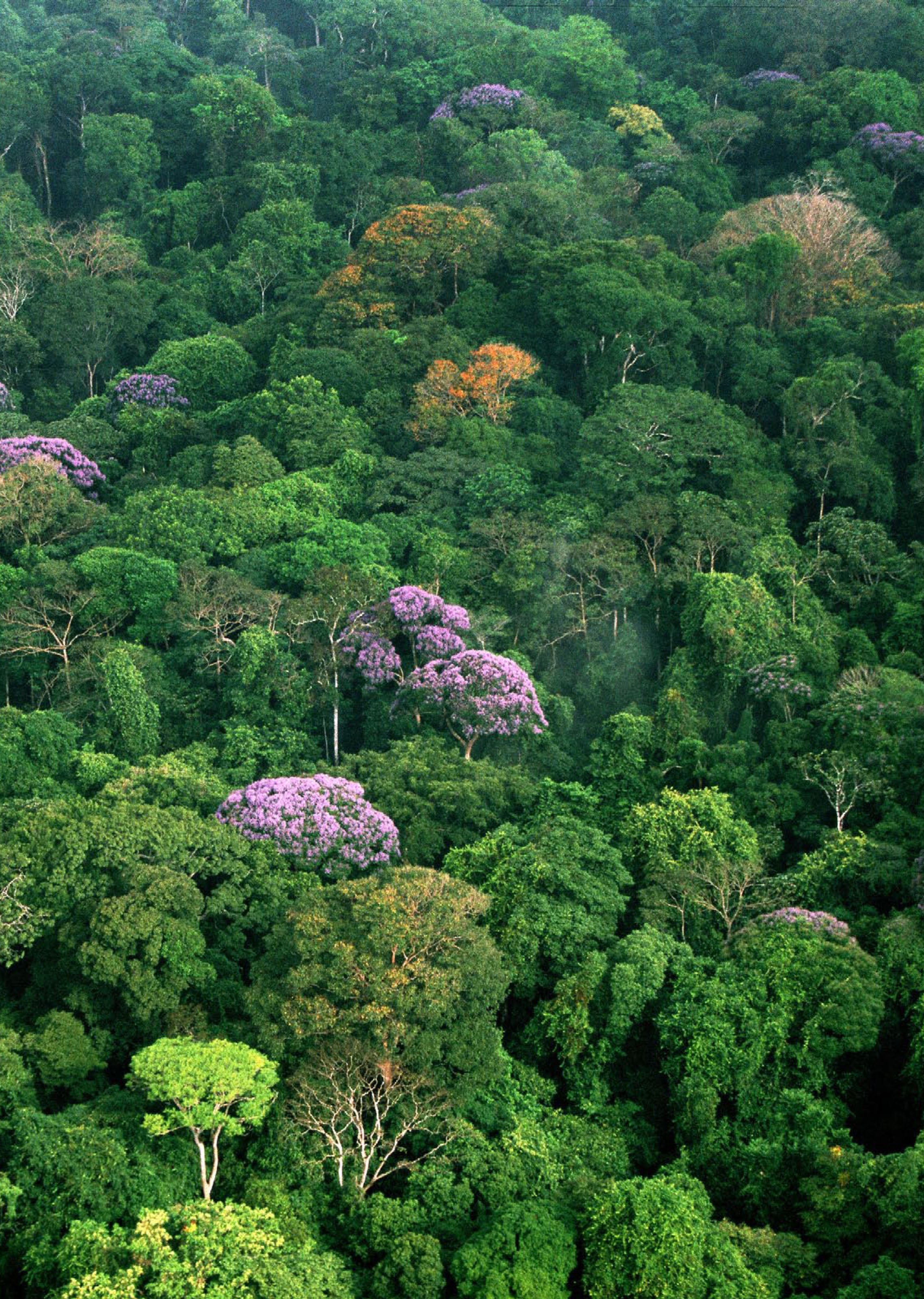The tropical forest canopy, often referred to as the vital upper layer of trees in rainforest ecosystems, plays a crucial role in maintaining the planet’s health. Not only is it a rich habitat for diverse flora and fauna, but it also serves as a significant carbon storage mechanism, helping to regulate our climate. Recent advances in NASA GEDI technology have enabled researchers to gain unprecedented insights into how climate change is affecting canopy height and overall forest dynamics. This study highlights that taller canopies are not just a sign of forest vitality but are directly linked to greater carbon sequestration, thereby enhancing their role as “Earth’s lungs.” Understanding the variations in the tropical forest canopy is essential for effective conservation strategies aimed at mitigating the impacts of climate change and ensuring forest health for generations to come.
The upper layer of tropical forests, known as the tree canopy, is a vital component of global ecosystems and serves as a barometer for forest vitality. This elevated network not only harbors a wealth of biodiversity but also plays an integral role in carbon absorption, which is increasingly important in the face of global warming. Utilizing cutting-edge satellite technology from NASA’s Global Ecosystem Dynamics Investigation, researchers are now able to closely monitor canopy height fluctuations and their implications for forest well-being. These insights are crucial for understanding how environmental factors like climate change and drought influence lush tropical forests across different continents. By assessing the health of the canopy, scientists can better inform conservation efforts and promote policies aimed at preserving these invaluable natural resources.
Tropical Forest Canopy: A Crucial Indicator of Forest Health
The tropical forest canopy represents the uppermost layer of trees and is pivotal for assessing the health and vitality of forest ecosystems. As noted by researchers, the height and density of canopies can directly reflect the carbon storage capacity and overall biodiversity of these rich environments. Taller canopies typically indicate a robust ecosystem where trees can thrive, playing a significant role in sustaining wildlife habitats and maintaining ecological stability. Furthermore, understanding the structural characteristics of the canopy is essential for grasping how tropical forests function as the planet’s ‘lungs’ by sequestering carbon and producing oxygen.
Recent studies leveraging NASA’s GEDI technology highlight the importance of canopy height in assessing forest health. This spaceborne LiDAR tool enables scientists to measure canopy dimensions with unprecedented accuracy. Variation in canopy height, affected by climate factors such as prolonged dry seasons and rising temperatures, provides insight into the resilience of these forests amidst climate change. Analyzing these patterns helps researchers predict potential shifts in forest dynamics and is vital for informing conservation strategies aimed at preserving these irreplaceable ecosystems.
Impact of Climate Change on Tropical Forests
Climate change represents one of the greatest threats to the integrity of tropical forests, as evidenced by alterations in canopy height and structure. Recent findings indicate that increasing temperatures and drought conditions can significantly affect forest health, leading to diminished carbon storage capability. The study of tropical forests in regions like the southern Amazon shows that prolonged dry seasons can trigger a noticeable decline in canopy height, with cascading effects on the entire forest ecosystem. As these environmental conditions intensify, the need for comprehensive monitoring becomes critical to understand and mitigate the impacts of climate change.
The role of advanced technologies like NASA’s GEDI LiDAR cannot be overstated in this context. By providing detailed measurements of the vertical structure of forest canopies, researchers can track changes over time, revealing the nuanced responses of tropical ecosystems to climate stressors. The ability to analyze the interplay between canopy height, soil properties, and climatic factors allows for targeted conservation efforts. As climate change continues to reshape our natural world, understanding these dynamics will be key to informing policy and promoting sustainable land management practices.
The Consequences for Biodiversity and Ecosystem Services
The ongoing decline of tropical forest canopies due to climate change does not just result in a loss of trees; it poses an existential threat to the myriad species that rely on these habitats. Biodiversity hotspots such as the Amazon and Congo Basins are increasingly at risk as canopy structures alter the microclimates essential for various flora and fauna. The disruption cascading from these changes impacts not only wildlife but also the crucial ecosystem services that tropical forests provide, including carbon storage and water regulation.
Moreover, with climate-driven shifts in the height and density of canopies, entire food webs could be jeopardized. Species that require specific canopy layers for nesting or feeding might find themselves at risk of extinction. Thus, understanding the delicate balance within tropical forest ecosystems becomes paramount. Conservation strategies need to incorporate insights from canopy studies to target protection for the most vulnerable areas, ensuring a holistic approach to biodiversity preservation.
Using NASA GEDI Technology to Monitor Forest Canopy Dynamics
The advent of NASA’s GEDI (Global Ecosystem Dynamics Investigation) technology marks a significant leap forward in our ability to monitor tropical forests. This innovative LiDAR system housed on the International Space Station captures precise data about forest canopy structure, providing scientists with tools to make informed assessments of forest health. The data collected reveals vital information about canopy height, which serves as both an indicator of forest vitality and a measure of carbon sequestration potential. Further understanding of these metrics through such sophisticated technology allows environmental scientists to map changes and trends over time, leading to more effective conservation strategies.
In the context of the challenges posed by climate change, GEDI’s contribution is invaluable. By enabling researchers to track variations in canopy structure across broad geographic areas, it uncovers the intricate relationship between environmental factors and forest dynamics. The seamless integration of high-resolution measurements streamlines the process of determining which regions are experiencing significant ecological stress, thereby facilitating targeted intervention efforts. As the significance of forest health grows in climate discussions, tools like GEDI become essential players in our fight against the deterioration of these vital ecosystems.
Canopy Height and Carbon Storage: Interconnected Dynamics
Canopy height is a crucial determinant of carbon storage in tropical forests, serving as a critical link in the relationship between ecosystem productivity and forest health. The taller the canopy, the greater its ability to capture and store carbon, which plays a significant role in mitigating climate change. Research has shown that changes in canopy structure, influenced by environmental factors such as temperature and rainfall, can lead to significant alterations in a forest’s carbon storage capacity. This relationship underlines the importance of preserving tall canopies in maintaining the Earth’s climate balance.
Furthermore, the carbon sequestration potential of tropical forests is intricately tied to the biodiversity they support. A diverse array of plant species contributes to a robust canopy structure, which in turn enhances carbon absorption. The loss of canopy height due to climate change potentially threatens this intricate system, leading to diminished carbon storage capabilities at a time when the Earth’s ecosystems are in dire need of resilience against climate fluctuations. Addressing these critical linkages is essential for formulating strategies that balance ecological health with climate mitigation efforts.
The Importance of Policy in Protecting Tropical Forests
As the implications of climate change unfold, the role of policy in protecting tropical forests becomes increasingly important. Policymakers need to use the insights gained from canopy studies, such as those leveraging NASA’s GEDI technology, to create actionable strategies that prioritize the conservation of vulnerable forest areas. These policies must integrate the scientific findings on canopy height and its significance to carbon storage and forest health, ensuring that effective measures are implemented to safeguard these ecosystems.
Without concerted efforts undertaken by global leaders and policymakers, the threats posed to tropical forests—through deforestation, climate change, and biodiversity loss—could escalate unchecked. The understanding of canopy dynamics derived from cutting-edge research will be pivotal in empowering policymakers to make informed decisions that protect these vital ecosystems. As tropical forests are not merely local treasures but global resources in the fight against climate change, their preservation demands urgent, informed action at all levels.
Future Research Directions in Tropical Forest Studies
Looking forward, research into tropical forests must expand beyond primary ecosystems to encompass a wider array of forested areas affected by human activity and climate change. This expansive approach can provide a more comprehensive understanding of forest resilience and adaptation strategies across diverse landscapes. Increasing the focus on mixed-use forests and secondary growth areas will yield crucial insights into how these environments can withstand or recover from climatic stresses.
Additionally, fostering interdisciplinary collaboration between ecologists, climatologists, and policymakers will be essential. Engaging in integrated studies that analyze the effects of climate change on forest canopy height, carbon dynamics, and species diversity can enhance our understanding of these ecosystems. As we advance our knowledge of how tropical forests respond to environmental changes, the collective insight gained can inform effective conservation practices and climate policies essential for maintaining these critical ecological resources.
Community Involvement in Forest Conservation
Local communities play a vital role in the conservation of tropical forests, especially concerning canopy health and overall ecosystem resilience. Engaging indigenous and local populations can lead to more sustainable forest management practices that are culturally appropriate and effective in preserving biodiversity. By involving communities in conservation efforts, researchers can glean valuable traditional knowledge while fostering stewardship among those most intimately connected with these ecosystems.
Furthermore, community-led initiatives around sustainable land use and restoration projects can significantly impact forest health, particularly as related to canopy structure and carbon storage. Providing education and resources to local groups will empower them to advocate for practices that maintain the integrity of their forest environments. As the interrelation between human activities and forest health becomes increasingly clear, fostering community involvement will be key to ensuring the survival and resilience of tropical forests in the face of climate change.
Technological Advancements in Forest Monitoring
Advancements in technology, particularly remote sensing tools like NASA’s GEDI, are revolutionizing how scientists monitor and assess tropical forest health. These tools provide unprecedented access to high-resolution data regarding canopy dynamics, allowing researchers to make well-informed conclusions about the effects of climate change and human activity. The ability to capture detailed information on canopy height and density facilitates a much greater understanding of the state of forests and their responses to external pressures.
Moreover, technological innovations extend beyond remote sensing, encompassing methodologies such as genomics, ecological modeling, and data analytics. Integrating these advanced approaches can enhance the effectiveness of assessments and interventions regarding forest conservation. By marrying cutting-edge technology with environmental research, we can better understand the complexities of tropical forest ecosystems, ensuring that conservation efforts are data-driven and effective in combating the pervasive effects of climate change.
Frequently Asked Questions
How does the tropical forest canopy help mitigate climate change?
The tropical forest canopy plays a vital role in mitigating climate change by acting as a significant carbon storage system. Taller canopies are associated with higher above-ground biomass, which contributes to greater carbon sequestration. By absorbing carbon dioxide from the atmosphere, these canopies help reduce the greenhouse gases that contribute to global warming.
What technology is used to measure tropical forest canopy height?
NASA’s Global Ecosystem Dynamics Investigation (GEDI) uses LiDAR technology from the International Space Station to measure tropical forest canopy height. This advanced remote sensing technology provides precise data on forest structure, allowing researchers to assess changes due to climate change and other environmental factors.
What factors affect the health of the tropical forest canopy?
The health of the tropical forest canopy is influenced by several factors, including climate conditions, topography, and soil properties. Prolonged dry seasons and increased temperatures due to climate change are significant drivers that can result in reduced canopy height, affecting the overall forest health and carbon storage capacity.
Why is understanding canopy height important for forest conservation?
Understanding canopy height is crucial for forest conservation because it serves as an indicator of forest health and productivity. Assessing variations in tropical forest canopy height helps researchers evaluate the carbon sequestration potential of different areas, guiding policies and interventions necessary for protecting these vital ecosystems against climate change.
What role does NASA GEDI play in studying tropical forests?
NASA GEDI plays a pivotal role in studying tropical forests by providing detailed measurements of canopy height and structure. This information helps scientists understand the impacts of climate change on forest health, enabling them to monitor changes over large areas and identify forests that are most vulnerable to environmental stressors.
How may prolonged dry seasons affect tropical forest canopy height?
Prolonged dry seasons can lead to significant reductions in tropical forest canopy height by stressing the trees and reducing their growth rates. As the dry season becomes longer due to climate change, forests—especially in areas like the southern Amazon—may struggle to maintain their structure and health, which is crucial for carbon storage.
What findings did the study reveal about the tropical forest canopy’s variation across regions?
The study revealed that tropical forest canopy height varies significantly based on environmental factors such as climate, soil properties, and topography. For instance, in the central Amazon, elevation plays a critical role, while prolonged dry seasons are the dominant factor in the southern Amazon. Understanding these variations is essential for predicting how different tropical forests will respond to ongoing climate change.
In what ways do tropical forests contribute to the earth’s carbon storage?
Tropical forests contribute to the earth’s carbon storage through their extensive canopy structures, which store carbon in the form of biomass. The larger and healthier the canopy, the more carbon it can sequester, making these ecosystems crucial for combatting climate change and maintaining global carbon cycles.
How can understanding canopy health influence climate change policies?
Understanding canopy health and its relationship with climate change can significantly influence climate change policies by helping policymakers identify vulnerable forest areas that require protection. By prioritizing these regions for conservation efforts, we can enhance carbon storage capabilities and biodiversity preservation, ultimately aiding in climate mitigation strategies.
| Key Point | Details |
|---|---|
| Tropical Forest Canopy Importance | Considered as ‘Earth’s lungs’ and essential for carbon storage. |
| Impact of Climate Change | New NASA study shows climate change stresses tropical forests, affecting canopy height. |
| Role of NASA’s GEDI | GEDI technology measures canopy height and variability caused by climate, topography, and soil. |
| Study Locations | Focus on tropical forests in Asia, Africa, and South America with minimal human disturbance. |
| Findings on Canopy Height | Higher canopies correlate with more carbon storage; height influenced by dry seasons and climate. |
| Future Research Directions | Aim to evaluate more global forests and inform climate policy for conservation. |
Summary
The tropical forest canopy plays a crucial role in maintaining global ecological balance and carbon storage. Recent studies underscore the vulnerability of these canopies to climate change, highlighting that elevated temperatures and prolonged dry seasons are alarming indicators. The intricate relationship between canopy height and environmental factors calls for immediate attention, as a decline in canopy health could severely impact biodiversity and carbon sequestration efforts. It is essential to prioritize the conservation of tropical forest canopies to mitigate the effects of climate change effectively.



